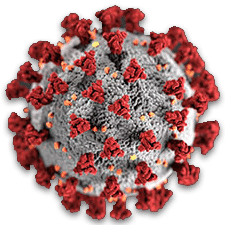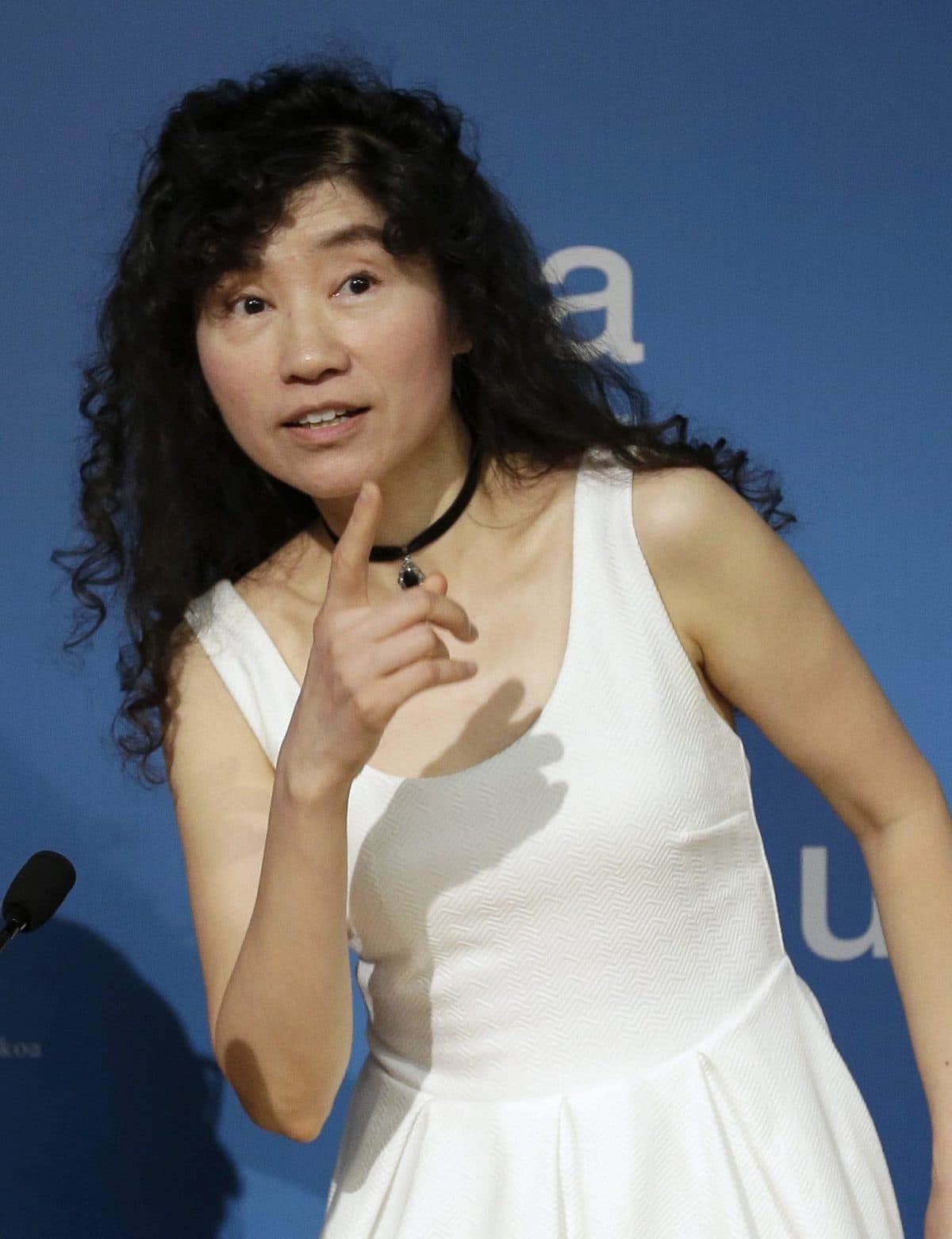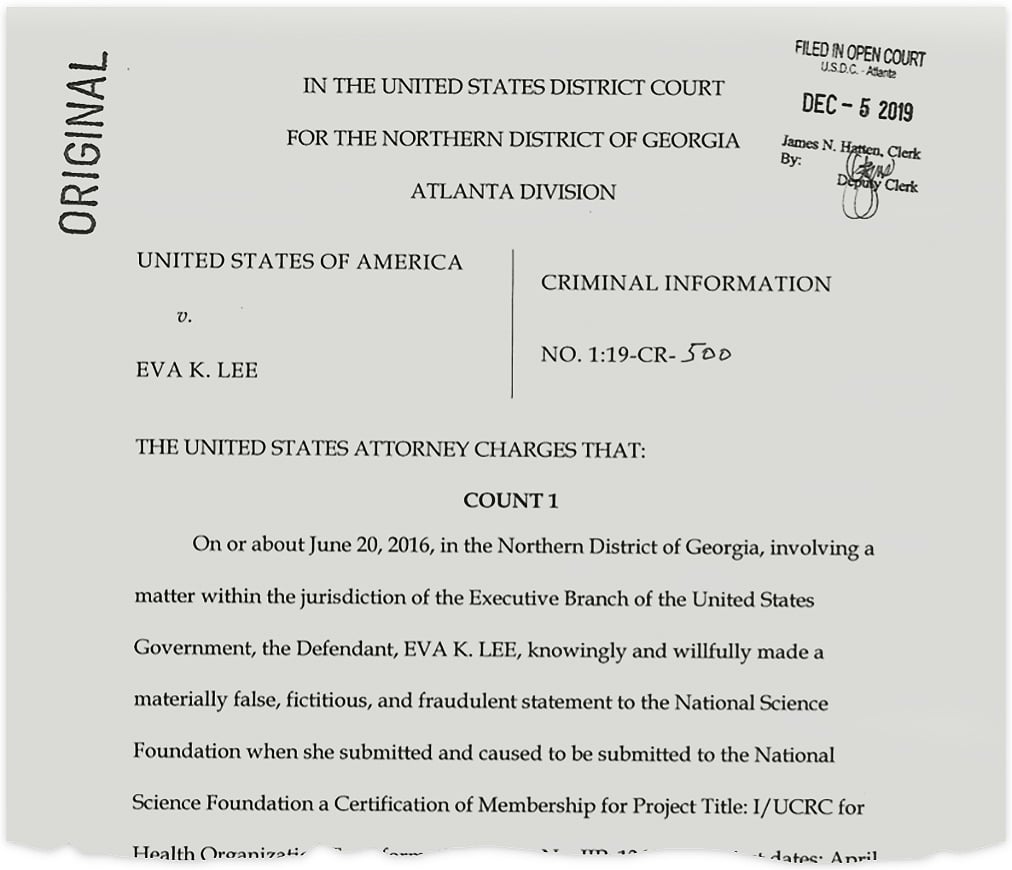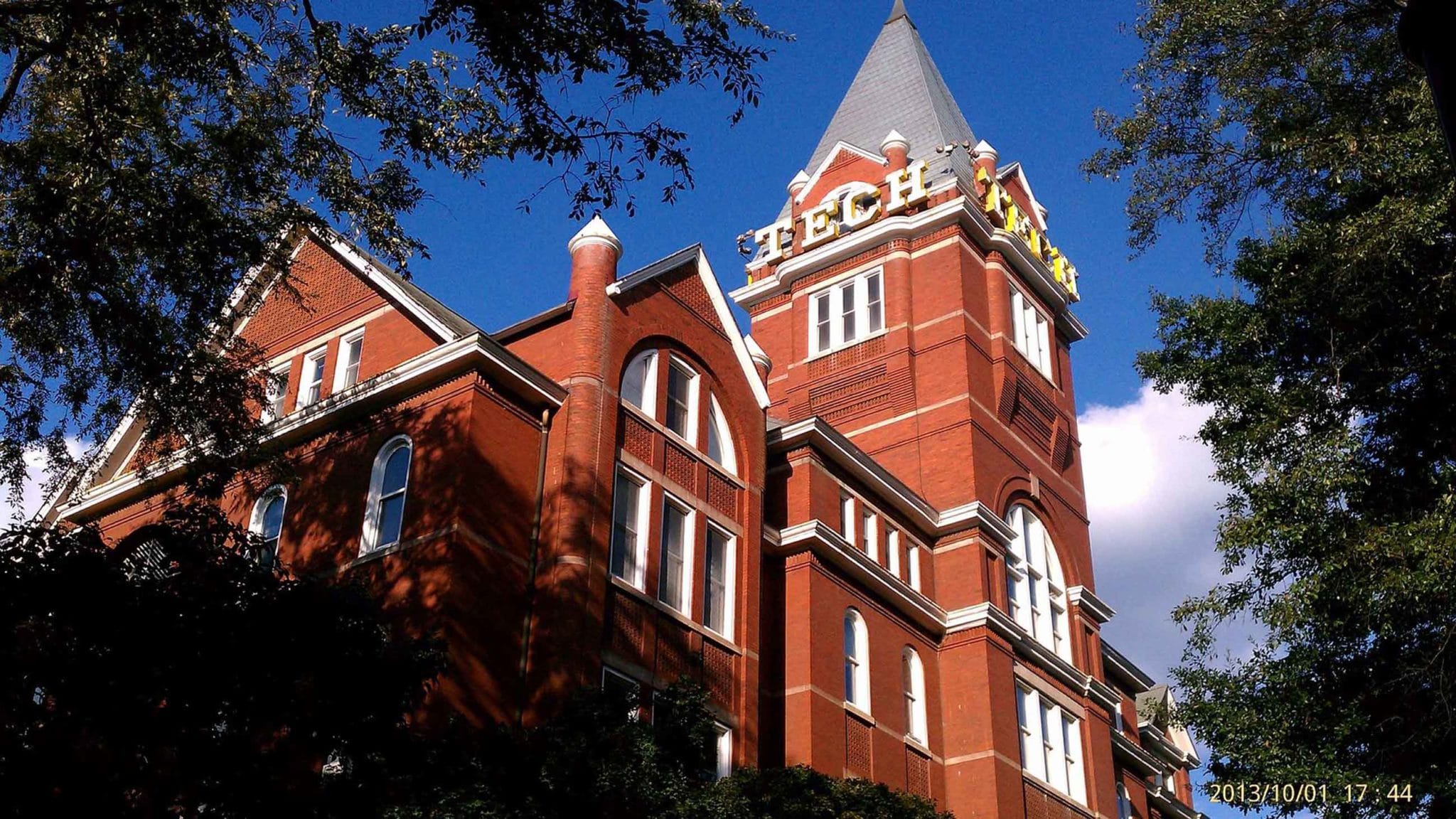Sidelined by Scandal, a Top Disease Modeler Watches and Worries
On a balmy Georgia evening in January, Eva Lee, director of the Center for Operations Research in Medicine and Health Care at the Georgia Institute of Technology, was finishing up a paper about the global spread of avian flu and Middle East Respiratory Syndrome, or MERS. It was late and her husband was asleep next to her in the bedroom of their bungalow in a quiet Atlanta neighborhood.
On a whim, she says, she had recently added the novel coronavirus to her analysis, and it changed everything.
The 55-year-old mathematician was already widely regarded for her large-scale computational algorithms and models for tackling outbreaks and natural disasters. In 2003, she began development of a software program called RealOpt, which offers detailed models for strategic planning and operational responses to outbreaks, pandemics, and national disasters based on three-dimensional geospatial information, demographic and economic data, and other variables.
 |
Thoughts or questions on Covid-19? |
Lee usually runs RealOpt on dozens of computers at once, allowing her to potentially develop simultaneous surveillance and mitigation algorithms for multiple cities or regions. Her software is capable of drilling down county by county — data on each county in the U.S. was put in when her team worked with researchers at the Centers for Disease Control and Prevention to design a real-time simulator and decision support system for mass dispensing of vaccines. She says that to truly stem a global pandemic, strategies must always be tuned to the local level. “You need to run a huge amount of data,” she said. “Every city has to be run.”
That quiet January night, Lee says she was putting the finishing touches on her paper and inputting the latest data from reports of the new coronavirus then circulating in Wuhan, China. In the blue-white glow of her computer, she said she could already see the upward curves suggesting that a global disaster was in the making: The highly contagious virus that would later be dubbed SARS-CoV-2 was likely to become a pandemic. She was alarmed — and then she went to work.
In the ensuing weeks and months, Lee would join forces with colleagues around the country, and her early assessments on when the contagion began, as well as its overall virulence and likely trajectory across the globe, have all proven remarkably accurate. A recent investigative report by Kaiser Health News revealed that Lee has also been an active participant on an informal virtual team of academics and federal and state officials, including senior officials from the Department of Veterans Affairs, the State Department, the Department of Homeland Security, and the Department of Health and Human Services, devoted to assessing risks and helping devise strategies to slow the outbreak. And Lee herself has developed model interventions and strategies for county and city officials across the country aimed at combating the virus now sickening their residents, hobbling their economies, and threatening to outstrip the public health resources they have on hand.

Eva Lee at an international conference in 2016 — the same year the National Science Foundation says she provided false information on a grant document, stalling her career. “All the talent and knowledge I have is perfect for this purpose,” Lee said of the Covid-19 pandemic.
Visual: Villar Lopez/EPA/Shutterstock
There was just one problem: For the past year, Lee has been unable to access her massive bank of 200 computers at Georgia Tech, where RealOpt can run models and mitigation protocols for dozens of cities simultaneously. Lee has been on administrative leave since last April, locked out of her university email account and unable to interact with her students. In December of last year, she was charged in U.S. District Court with two felonies — one involving falsified information on an annual certification required for an ongoing $40,000 National Science Foundation grant, and the other accusing her of lying to a federal agent that was investigating the falsified information.
Lee pleaded guilty on both counts and is awaiting a decision in the case by a judge on May 21. For now, she is limited to working from home on her laptop — a punishment that has outraged some of her colleagues in the epidemiological community. “This is a national health crisis,” said Brent Egan, a professor of medicine and pharmacology at the Medical University of South Carolina who has worked with Lee on cardiovascular disease risk modeling. “Georgia Tech is threatening national security.”
Whether a reprieve is in order, given the imperatives of the deadly Covid-19 pandemic and the likelihood that Lee’s expertise could contribute to fighting it, is a matter of debate. And Georgia Tech officials are adamant that until a federal official specifically requests Lee’s help in the country’s Covid-19 response, she will remain barred from accessing her lab. But it’s Lee herself who most feels the sting of impotency at a moment when her life’s work would seem to have the most utility — and the potential to save lives. “I broke down crying last night so hard,” she said in a recent interview. “I have all the county information on my system. I built it for the CDC. I could just use that.”
Such modeling, Lee’s supporters say, could go a long way to helping to bring real and vital granularity to the current pandemic response. The schools may need to be closed and stay-at-home orders enforced in New York City, for example, but not necessarily in Missoula, Montana. But without a street-level view of a pandemic’s potential impact, public health officials are often left with blunter tools and less surgical responses. “Local, simultaneous modeling is necessary. I cannot do it on a single computer,” Lee said. “All the talent and knowledge I have is perfect for this purpose.”
But for now, she added: “My wings are clipped.”
The first general mathematical theory to predict the curve of an infectious disease was set forth nearly a hundred years ago in a series of papers published between 1927 and 1933 by William Kermack and Anderson McKendrick. The Kermack-McKendrick model was based on historical plague and cholera epidemics and split a population into three groups: susceptible (S), infectious (I), and recovered (R).
These so-called SIR models establish a threshold above which infections might lead to large epidemics and below which they will die out without infecting the whole population. Today’s models include many variations on that theme. There is SIS (susceptible, infectious, susceptible again), SEIR (susceptible, exposed, infectious, recovered and immune), SEIRS (which adds potential future susceptibility as immunity wanes), and MSEIRS (which includes infant immunity due to maternal antibodies), to name just a few. Most rely on networks — those branching trees where one person infects others, who then each infect others, branching out until suddenly, hundreds of thousands are sick.
Lee’s model is unusual in that it contains as many as eight stages. Known as SEPAIR, it includes susceptible, exposed, infectious, asymptomatic, symptomatic, recovered but still infectious, recovered and not infectious, and deceased groups. Vaccination is also included when available. This model works well in a disease like Covid-19, which is transmitted via contact with droplets on surfaces or in the air, and with wide variation in the time a person is considered infectious after first exposure.
Working alone in January, Lee, who grew up in Hong Kong, says she was intensely interested in the novel coronavirus’s reproduction number, known among epidemiologists as R0 or “R-naught” — the average number of new infections generated by one infected individual. Lee ultimately assessed it at two — meaning every person infected with SARS-CoV-2 would likely infect two other people. The number has since settled around 2.2 (the R0 for the seasonal flu, for comparison, is typically about 1.3). R0 foretells the force of an infection and how quickly it will spread. In the case of the 1918 Spanish flu, for instance, Lee says the first wave had an R0 of 1.49, but the second wave was a disastrous 3.75. Perhaps that early virus had adapted to humans and mutated to become more contagious.
“That is one of my worries with Covid-19,” Lee said.
As she continued to gather information, Lee began to realize something that is now widely understood, but which few people grasped at the time: Although the mean incubation time for the new virus was around 5.2 days, it could drag to 12 and in some cases 20 days, so it was possible a person might be asymptomatic yet shedding virus for a long time. A January paper in the New England Journal of Medicine also indicated there could be post-recovery viral shedding. It also appeared likely that many infected people would never develop symptoms at all. All told, it was “a very rare situation,” Lee said.
By the end of January, her model put the starting date of the disease as November 15, 2019 — a month earlier than most other models that would follow. Then, on March 13, Chinese officials indirectly confirmed Lee’s data, announcing that the first case occurred on November 17, in a 55-year-old from Hubei Province. Lee also predicted that over the 180 days following the first case, roughly 3,400 deaths would occur in Wuhan. The official number more than four months out is 2,535, likely a significant underestimate. She also crunched numbers on the Diamond Princess cruise ship, raising the R0 to over three to reflect the close confines and greater chance of transmission, and calculated that over the next 60 days, about 1,000 of the 3,700 individuals would be infected; the official number, minus data about the crew of nearly 500, was a little over 700.
By February she had begun to work with colleagues around the country — including Duane Caneva, chief medical officer for the Department of Homeland Security — to help devise strategies to slow the outbreak, particularly in Washington’s King County, infamous now for the nursing home outbreak where more than 160 residents, staff, and visitors came down with Covid-19. Working alongside others, Lee created a model for King County with appropriate interventions that was shared in late February as part of a lengthy email chain that included senior officials from Department of Veterans Affairs, the State Department, the Department of Homeland Security, and the Department of Health and Human Services. The model used many of the parameters she had established for RealOpt to estimate the time when community spread began in the Seattle area and predict infection and mortality numbers, as well as recommending the optimal timing for the implementation of school closures and telework for non-essential businesses.
A month later, Lee went back to check her predictions, plotting the number of now-confirmed cases against the curves that her model had predicted a month earlier. It was a near-perfect match.
Later, Lee would work with a taskforce in Maryland, offering them a similar model, this time focused on Baltimore. At the time, the city had no reported infections, so she looked at likely infection and mortality rates if implementation of school closures and telework were delayed, and offered advice on the design of a drive-through Covid-19 testing facility, as well as recommendations for procuring medical personnel, the design of open-floor intensive care facilities, and how many extra beds might be needed to be able to save the largest number of lives. In mid-March, after listening to the recommendations of the task force, Maryland Gov. Larry Hogan set in place statewide restrictions and shutdowns.
Dr. David Marcozzi, an associate professor of population health at the University of Maryland School of Medicine and Covid-19 incident commander for the University of Maryland Medical System suggested Lee’s input mattered: “Her model was helpful,” he said.
Lee then ran models on drive-through testing design, treatment strategies, medical surge needs, and facility layout design for New York City, which Marcozzi forwarded on to response leaders there. Without access to her program and computer cluster, she was forced to model medical surge for New York from scratch, manually sourcing the kind of demographic and other data that is already baked into her RealOpt program. It took her a week to compile, and she sent it out on March 30 — a day when the state surpassed 1,000 dead and 60,000 sick.
At Georgia Tech, she says, she could have modeled all of New York state, county by county, in a single day.
Though mathematical models of outbreaks abound, Lee says her models are more granular and fine-tuned than many — and a lot of people agree. Over the years, her expertise has been tapped to help predict the course of MERS and early iterations of SARS, and she has worked with the CDC in combating the Zika, H1N1, and Ebola outbreaks. “I don’t just look at the disease,” she said. Rather, using data and standard differential equations, she develops strategies to optimize and plan for exactly what resources might be needed during an outbreak, including beds, gloves, swabs, tests and ventilation devices, and personnel.
That’s precisely the kind of information that many jurisdictions are now starved for, and while many other talented disease modelers are busy filling in the gaps, supporters say all hands need to be on deck to combat the Covid-19 pandemic — and particularly hands as experienced as Lee’s.
“Dr. Lee’s prolific breadth and depth of work is awe-inducing,” wrote Dr. James Lawler, executive director for international programs and innovations at the University of Nebraska Medical Center, and former chief medical officer for the National Institute of Allergy and Infectious Diseases Integrated Research Facility at Fort Detrick, Maryland, in a letter sent in support of Lee to Georgia Tech officials in early February. “I have no doubt that her efforts have saved and will continue to save lives.”
For now, though, Lee remains hamstrung — and the particulars of her case are straightforward. The guidelines for the $40,000 National Science Foundation (NSF) annual grants that Lee and Georgia Tech received — which helped Lee’s lab to partner with local hospitals on various aspects of epidemiological modeling — required that at least three health care industry members also contribute a total of $175,000 each year for the program. In 2016, Lee’s certification for the NSF listed five health care members who had each donated $50,000 in cash to the program, but only two actually had. She also duplicated the signature of a Georgia Tech representative from a previous year’s paperwork without authorization, according to documents submitted to the court.

Lee’s attorney, Buddy Parker, argues that despite these transgressions, Lee’s program saved millions of dollars in costs to Atlanta’s Grady Hospital and other local institutions over the years. He also insists that Lee herself cares mostly about helping others — so much so that when Georgia Tech wanted to license her RealOpt program for a fee, Lee demanded that it be given free of charge to public health agencies nationwide. “She stole no monies from NSF,” Parker said. “She stole no monies from Georgia Tech.”
According to Georgia Tech officials, Parker reached out to the university in January to request that Lee’s access to the school’s systems and network be restored so that she could conduct coronavirus research on behalf of the U.S. government. Institute officials told Undark that they demanded proof of such a mandate in the form of a “written request for her participation from a senior government official overseeing the U.S. government’s coronavirus efforts.” To date — and despite numerous letters to the institute from colleagues and supporters — officials at the school maintain that no such appeal from a government official has yet materialized.
In follow-up emails to Undark from institute spokesman Joshua Stewart, Georgia Tech declined to say precisely who would qualify as such an official. And in a March 31 email sent from Stewart, school officials added: “Given that Dr. Lee has [pleaded] guilty to two felonies relating to fraud, is awaiting sentencing from a U.S. District Court Judge, and is currently on administrative leave from Georgia Tech, asking her to authenticate her request is reasonable, and we remain open to receiving it.”
For her part, Lee does not dispute the charges against her — though she says that in the early years of the NSF grant, she’d had assistance from Georgia Tech, which prepared the necessary, one-page letter indicating compliance with the funding requirements. Later, she says, the letter became a simple form with tables that she was asked to fill out herself. She also says that while she knew that three of the five contributing institutions she listed on the 2016 certification had not contributed cash, she reckoned that their non-cash support exceeded the NSF’s financial requirements. Still, the assertion made on the form was clear: It said these contributors had put up funding. They had not. Other irregularities — including the signature duplication — Lee attributed to misunderstanding on her part.
“I feel very sorry for my actions,” she said, adding: “I want so badly to get back to my lab computers and emergency response systems that I have built for them, to help fight Covid-19 fully.”
Many of her colleagues would like to see that happen, and they argue that Georgia Tech is making a mistake in barring her from accessing her computer systems. “I think that it’s totally unjustified to deny her access to those computers and that information that certainly could help us with this pandemic,” said Michael Wright, senior vice president of operations at Atlanta’s 950-bed Grady Memorial Hospital from 2011 to 2013. Referring to Lee’s work with Grady, Wright noted that her models were able to reduce surgical site infections in open-heart bypass surgery from 23 percent to zero in six months. Another project with Lee reduced the length of stay in the emergency department from 14 hours to 7.5 hours. “Her work is truly state of the art. It’s transformational.”
Richard Tapia, a professor of computational and applied mathematics at Rice University and Lee’s Ph.D. advisor, was more blunt with regard to Georgia Tech’s position: “There are felonies and then there are felonies,” he said. “I think they are acting in a terrible way.”
Whether or not that’s true, the 200 computers at Georgia Tech — which were, as it happens, purchased using other funding from the CDC, the Department of Health and Human Services, the National Institutes of Health, and the Department of Homeland Security to assist in Lee’s research on emergency response — remain off limits. “I do one city at a time,” she said. “It’s absolutely horrible.”
The National Science Foundation has also barred Lee from serving as a reviewer, adviser, or consultant for three years. Under a plea agreement, the U.S. Attorney’s Office has recommended that Lee serve a sentence of eight months of home confinement, though that is awaiting a May 21 decision by U.S. District Judge Steve Jones, who could opt for jail time instead.
In the meantime, Lee says she’ll keep doing what she can from her personal laptop. In a video interview last week, she recalled working with Japanese officials in the aftermath of the 2011 tsunami that inundated the Fukushima Daiichi Nuclear Power Plant, causing a meltdown in three of the four reactors. Lee was there to help model the physical and social fallout, and she says she often found herself in camps of evacuated residents, moving among crowds of irradiated people. The Geiger counters that she carried with her to measure ionizing radiation beeped incessantly, she says.
In many ways, Lee says, the Covid-19 pandemic is incalculably worse: “Every country is [at a] standstill,” she said. “My God, it is so crazily hard to think about it.
“Yet we have to remain strong,” she added, “because we are just beginning.”
Jill Neimark is a writer based in Atlanta, Georgia, whose work has been featured in Discover, Scientific American, Science, Nautilus, Aeon, NPR, Quartz, Psychology Today, and the New York Times. Her latest book is “The Hugging Tree” (Magination Press).












Comments are automatically closed one year after article publication. Archived comments are below.
Riiiiiiiiight. Mathematician LIES on federal paperwork for a grant and then LIES to the investigative agent. Then pleads guilty in federal court admitting wrong doing. And you expect anyone in the scientific / academic community to take whatever research she’s done to be honest and accurate? And I love how the author cherry picks some of the “outrage” in the scientific community by stating “some” of her colleagues are outraged. Maybe “some” are, but the vast majority are looking at this researcher with contempt and perhaps just a bit of sadness at what she’s done to her University and reputation.
Sorry. There a thousands of researchers out there with “all the talent and knowledge” (as she claims she has) she possesses who are doing great work and just as smart as this person is……without needing to commit criminal acts.
We’ll be fine without her.
they have to give her another chance, for the knowledge that she has she deserves to be forgiven, at least this time
Feds will never ask her. First, the regular Trumpian disqualification- she’s a super intelligent woman. Second, she’s Asian. But third, and most important- they don’t want the pandemic stopped too soon. The Administration needs time to infect us with their shock doctrine malignancies. Some smart people around Trump knew the truth of Coronavirus in January. They secretly briefed the Senate- leading to Georgia senators, among others, insider trading schemes for which they will not be held accountable and will laugh at us rubes all the way to the bank- but completely hoodooed Trump and his reactionary apologists into believing and spewing subsequent lies. Now that Covid 19 has exploded upon us, these oligarchal puppets and Trump handlers have what they most needed- fear, uncertainty, isolation, neutering of the legislature and a slavish Supreme Court- to finish off democracy. Dismantling environmental protections, obliterating fiscal oversight, wholesale expulsion of brown-skinned immigrants, controlling media access, ubiquitous propaganda of scapegoating, fear, and a Noah’s Ark of enemies are just the start. A hundred thousand death? As long as the deaths are primarily Blacks and Hispanics, the poor and especially the old poor and frontline service workers in underpaid jobs, they wring their hands, hiding smirks. Medical personnel? Not concerned enough for any real effort.
Who started this investigation?? Why are they after her?? Seems like a really small thing to jump on.